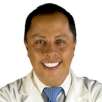The aim of orthodontic diagnosis is to identify dento-alveolar, skeletal and functional alterations in the maxillo-facial complex. Diagnosis and treatment planning are based on a combination of study models, intra-oral and extra-oral images, and radiographs, traditionally consisting of panoramic and cephalometric radiographs.
3-D cephalometry
Cephalometric analysis (CA) plays an important role in diagnosis and treatment planning. Traditional CA is based on three different X-ray projections: latero-lateral teleradiography, postero-anterior teleradiography and axial projection. However, conventional radiographs are limited because they provide a 2-D representation of 3-D structures. The traditional system, analysing the three dimensions separately, is insufficient because dento-facial alterations often take place in 3-D space.
Thus, the limits of traditional CA are:
_errors in radiographic projection, resulting in enhancements and distortions;
_operator errors in the measurement systems;
_errors in the identification of the cephalometric landmarks owing to superimposition of anatomic structures; and
_inability to evaluate the three dimensions of the craniofacial complex.[1]
The recent introduction of CBCT in combination with computer software allows the application of this new methodology to different fields of dentistry, including its successful use in orthodontics (Fig. 1).[2] Owing to CBCT, the 3-D morphology of the cranial skeletal structures can be represented properly. With CBCT, the patient is exposed to similar levels of radiation as during conventional CA and up to 20 times less than during multi-slice-CT exams (Table I).[3]
embedImagecenter("Imagecenter_1_664",664, "large");
At the Orthodontic Department at the University of Milan, CA is performed with a new 3-D methodology that allows for an easy, effective and repeatable way to decrease operator-driven errors.[4] It is based on the identification of 18 points (10 median and 8 lateral), all of which are identified on a hard-tissue CT section and verified on the two remaining CT sections. Further verification is then performed on the volume rendering generated by SimPlant OMS (Materialise).
The 18 points determine 36 measurements on the sagittal, vertical and transversal dimensions (Fig. 2). At the University of Milan, 44 skeletal Class I normodivergent patients were selected from an archive of 500 CBCT scans. The cephalometric diagnosis of a skeletal Class I normodivergent relationship is based on the School of Milan. The same patients were then analysed with 3-D cephalometry. The results allowed the identification of a normal range of values for each measurement (Table II).
The 3-D technique goes beyond the limitations of 2-D analysis in many ways:
_effective representation of true 3-D morphology of the cranial structures without distortion, avoiding projection and identification errors;
_reduced operator bias because the measurements are performed automatically;
_simplicity and repeatability in the identification of landmarks, using true anatomic structures without superimposition or the problems of geometric construction;
_ability to obtain CA using the three dimensions; and
_dento-skeletal alterations can be analysed in 3-D in order to determine appropriate treatment.
Combined orthodontic and surgical planning
The introduction of 3-D imaging techniques has revolutionised the planning phase of combined orthodontic and surgical treatment. The use of the computer, together with dedicated software, allows for a fast, precise and standardised procedure. 3-D virtual planning entails the following:
_CBCT scan;
_high-definition impression;
_reference aligner;
_digital scan cast; and
_CBCT digital cast interface.
Using virtual planning, it is possible to obtain the virtual visual surgical treatment objective and the virtual orthodontic model. High-definition impressions are obtained using polyvinyl siloxane, which guarantees well-defined details while allowing for the double-pour method. Double-poured casts are necessary to obtain an adequate scan and require the use of both a full cast and individual dental elements selected from a second cast. Single dental element scans allow for proper analysis of contact points. An optical cast scan is performed using structured-light scanners, which produce a 3-D image captured by a camera. In this manner, a group of points is determined by the software, which then determines the coordinates of the acquired points and finally creates the 3-D image (Fig. 3).[5]
Moreover, the digital dental cast is then combined with the CBCT scan, which allows for a very detailed analysis of both the bone (through the CBCT scan) and the dental structure (through the cast scan). CBCT does not provide enough data regarding all the dental details necessary to produce the orthodontic model (Fig. 4).[6]
In order to superimpose the two records properly, a specific three-contact point bite registration wax, known as the reference aligner, has been introduced. The reference aligner needs to be applied to the teeth when the high-definition impressions are taken. It is made of Moyco (an extra-hard wax) and consists of a supporting arch and three spheres. These are made of calcium-based glass, which has cast-pouring radiopaque properties. The wax is applied during CBCT and is placed between the cast arches during the optical scan (Fig. 5).
It is remarkable that the wax thickness does not significantly influence the accuracy of the radiographic scan and consequently the results of the CA. The software is able to recognise the presence and size of the spheres in the CBCT scan and matches them to those corresponding areas on the cast. This is currently the only method that allows for an overlap with an error margin of less than 0.1 mm.[7] Once the data has been collected, it is possible to perform different kinds of analyses before the surgical treatment. The software presents powerful segmentation tools that allow the splitting of the maxillo-facial complex from the mandible, providing two separate images.
This feature is relevant in orthodontic and surgical planning for calculating bone movement. The clinician can select the tissues to be moved following a procedure similar to the manual one. For example, it is possible to select the osteotomic lines in order to simulate a forwards or backwards mandible shift, finding the exact shift needed (in mm) to properly correct the malocclusion (Fig. 6). Once the bone correction has been finalised, it is possible to create a 3-D orthodontic model and display the resulting dental correction to be obtained by the end of the treatment.
Finally, shifting back the bone structure (and the dental arch with the final model) to the original maloccluded position, it is possible to obtain the target cast to be reached before the surgical treatment. On the cast, it is then possible to build successive images using CAD/CAM techniques to track progress towards orthodontic pre-surgical treatment.[8]
Virtual surgery has a twofold objective: firstly, to verify that the planned shifts are in fact feasible; and secondly, to position the cast according to the ratios needed to build the surgical splint, which will be used during the surgical procedure. The digital cast superimposition reduces the treatment planning phase, as it is not necessary to reveal the facial arch or to use the articulator. In fact, all the data can be sourced from the combination of the CBCT and cast scans. Recent studies focus on the enhancement of the system through the development of an intra-oral scanner, which will allow direct 3-D impressions, skipping the conventional impressions, which—although precise—can be influenced by manual errors.[9,10]
Although complex, using software offers many advantages because it enhances both orthodontic and surgical techniques, while ensuring a very high quality result. In fact, a CAD/CAM technique allows for a standardised procedure and easy quality checking, in comparison to traditional operator-performed techniques, which are open to inaccuracies.
Creating customised multi-bracket appliances
In virtual orthodontic and surgical planning, it is possible to create a digital orthodontic model once the bone bases have been shifted towards their proper position. The latest dental shift software is able to perform single-element segmentation automatically. The operator can obtain a full 3-D visualisation of the dento-alveolar relationship and can consequently modify tip and torque, rotate and shift dental elements in the 3-D space in order to simulate the orthodontic treatment.
In order to display the results of the pre-surgical orthodontic treatment immediately, the software shows two overlapping images, differently coloured to distinguish the initial situation from the ideal one (Figs. 7 & 8). As a result, a digital model is created, containing all the details to reach a functional occlusion.
The first step in the process of creating a customised bracket is possible thanks to CAD/CAM technology.[11,12] The CAD/CAM technique entails two phases: the design phase (CAD) and the manufacture phase (CAM),[13] performed through computers that send instructions to milling machines in order to create the end-product.6 These machines work either through removal (such as a CNC cutter) or through addition—stereolithography (SLA), 3-D print or plastic materials/composites, laser sintering (SLS) or laser fusion (SLF) of metal materials.
The elements that allow the bracket customisation depend on its base. The base is designed through the CAD software and placed on the centre of the dental surface. The software will then allow us to customise the bracket (Figs. 9 & 10). In designing the bracket, it is possible to distinguish between a partial and a complete customisation. The first entails the customisation of the size and shape of the bracket portion facing the dental surface, but features a standard angle in the non-customisable portion of the twin bracket. Complete customisation entails the additional modification of the angle between the bracket base and the twin portion. This is the ideal, considering that the spatial parameter of the dental elements might vary according to the different malocclusions.
Once the design phase has been finalised, the brackets are ready for manufacture by a milling machine. These machines, which mill very small items, need to be run in a standardised environment with maintained conditions to guarantee high precision while minimising the possibility of errors. Consequently, the higher the precision required, the larger the milling machine will be. It is also necessary to place the machine in a dedicated environment with a special floor cover with amortising panels that stabilise the cutter and partially absorb the vibration produced. Moreover, a very small cutter of approximately 0.001 mm needs to be used. For example, considering that the smallest cutters can remove up to 3 % of a millimetre each time, three to four passes will be required to create the mesh facing the tooth (Fig. 11).
The technological progress represented by CAD/CAM as described is based on the digital design feature and the computer-automated manufacturing process.[14] The main advantages are better control of the production process and a significant reduction in operator-driven errors, while enabling the use of sophisticated materials, such as Grade 5 titanium, which was not possible with traditional techniques.[15]
Editorial note: A complete list of references is available from the publisher.
COLOGNE, Germany: ClearCorrect, the Straumann Group’s flagship orthodontic brand, is excited to announce new products and features launching at the ...
SAN JOSE, Calif., US: The world’s largest clear aligner treatment provider has alerted investors to a substantial slowdown in new orthodontic appointments...
VALENCIA, Spain: This year marks the tenth year since the founding of the European Aligner Society (EAS) to provide information on aligner therapy to ...
Dr Julia Haubrich is a member of the board of the German Association for Aligner Orthodontics and chair of its sixth scientific congress, which will take ...
Geometry of the bone present can make implant placement challenging. This can be especially true in the anterior, where the angle of the ridge requires a ...
Clinical orthodontics must be viewed as a specialty cemented in biology, Dr Young-Guk Park from the Kyung Hee University in Seoul says. In this final part ...
PARIS, France: Every year in November, a few days before the congress of the French Dental Association, the Palais des Congrès de Paris hosts the Les ...
The submandibular fossa (SF) is an important anatomic landmark of the mandible, where the submandibular gland resides. During dental practise, particular ...
FARMINGTON, Conn., US: Many factors may influence therapeutic decisions in orthodontics. For example, orthodontists may sometimes inaccurately interpret ...
Over the past decade, there has been a notable surge in the use of clear aligners, and their benefits and advantages have been extensively documented. ...
Live webinar
Thu. 18 April 2024
11:00 am EST (New York)
Live webinar
Mon. 22 April 2024
10:00 am EST (New York)
Prof. Dr. Erdem Kilic, Prof. Dr. Kerem Kilic
Live webinar
Tue. 23 April 2024
1:00 pm EST (New York)
Live webinar
Wed. 24 April 2024
8:00 am EST (New York)
Dr. Yin Ci Lee BDS (PIDC), MFDS RCS, DClinDent Prosthodontics, Dr. Ghida Lawand BDS, MSc, Dr. Oon Take Yeoh, Dr. Edward Chaoho Chien DDS, DScD
Live webinar
Wed. 24 April 2024
1:00 pm EST (New York)
Live webinar
Thu. 25 April 2024
12:00 pm EST (New York)
Dra. Deborah Martinez LaForest, Dra. Macjorette Larez, Dr. Francisco Castellanos Medina, Dr. Francisco Eraso
Live webinar
Fri. 26 April 2024
12:00 pm EST (New York)



 Austria / Österreich
Austria / Österreich
 Bosnia and Herzegovina / Босна и Херцеговина
Bosnia and Herzegovina / Босна и Херцеговина
 Bulgaria / България
Bulgaria / България
 Croatia / Hrvatska
Croatia / Hrvatska
 Czech Republic & Slovakia / Česká republika & Slovensko
Czech Republic & Slovakia / Česká republika & Slovensko
 Finland / Suomi
Finland / Suomi
 France / France
France / France
 Germany / Deutschland
Germany / Deutschland
 Greece / ΕΛΛΑΔΑ
Greece / ΕΛΛΑΔΑ
 Italy / Italia
Italy / Italia
 Netherlands / Nederland
Netherlands / Nederland
 Nordic / Nordic
Nordic / Nordic
 Poland / Polska
Poland / Polska
 Portugal / Portugal
Portugal / Portugal
 Romania & Moldova / România & Moldova
Romania & Moldova / România & Moldova
 Slovenia / Slovenija
Slovenia / Slovenija
 Serbia & Montenegro / Србија и Црна Гора
Serbia & Montenegro / Србија и Црна Гора
 Spain / España
Spain / España
 Switzerland / Schweiz
Switzerland / Schweiz
 Turkey / Türkiye
Turkey / Türkiye
 UK & Ireland / UK & Ireland
UK & Ireland / UK & Ireland
 Brazil / Brasil
Brazil / Brasil
 Canada / Canada
Canada / Canada
 Latin America / Latinoamérica
Latin America / Latinoamérica
 USA / USA
USA / USA
 China / 中国
China / 中国
 India / भारत गणराज्य
India / भारत गणराज्य
 Japan / 日本
Japan / 日本
 Pakistan / Pākistān
Pakistan / Pākistān
 Vietnam / Việt Nam
Vietnam / Việt Nam
 ASEAN / ASEAN
ASEAN / ASEAN
 Israel / מְדִינַת יִשְׂרָאֵל
Israel / מְדִינַת יִשְׂרָאֵל
 Algeria, Morocco & Tunisia / الجزائر والمغرب وتونس
Algeria, Morocco & Tunisia / الجزائر والمغرب وتونس
 Middle East / Middle East
Middle East / Middle East
:sharpen(level=0):output(format=jpeg)/up/dt/2024/04/Shutterstock_1762644056.jpg)
:sharpen(level=0):output(format=jpeg)/up/dt/2024/04/Entries-open-for-SMILE-Health-dental-start-up-accelerator-programme.jpg)
:sharpen(level=0):output(format=jpeg)/up/dt/2024/04/oral-health-awareness-is-generally-low-in-singapore.jpg)
:sharpen(level=0):output(format=jpeg)/up/dt/2024/04/New-Align-Technology-Campus-to-elevate-the-standard-of-care-in-dentistry-1.jpg)
:sharpen(level=0):output(format=jpeg)/up/dt/2024/04/Study-points-to-lack-of-formal-education-on-cannabis-in-dentistry.jpg)











:sharpen(level=0):output(format=png)/up/dt/2024/01/ClearCorrect_Logo_Grey_01-2024.png)
:sharpen(level=0):output(format=png)/up/dt/2010/11/Nobel-Biocare-Logo-2019.png)
:sharpen(level=0):output(format=png)/up/dt/2013/04/Dentsply-Sirona.png)
:sharpen(level=0):output(format=png)/up/dt/2013/03/LM-Dental.png)
:sharpen(level=0):output(format=png)/up/dt/2014/02/MIS.png)
:sharpen(level=0):output(format=png)/up/dt/2022/05/osstem_logo.png)
:sharpen(level=0):output(format=jpeg)/up/dt/2013/01/c754f62c4d014298111fe8e874411cc7.jpg)

:sharpen(level=0):output(format=jpeg)/up/dt/2024/04/Shutterstock_1762644056.jpg)
:sharpen(level=0):output(format=gif)/wp-content/themes/dt/images/no-user.gif)
:sharpen(level=0):output(format=jpeg)/up/dt/2023/03/ClearCorrect-Your-partner-in-orthodontics_1.jpg)
:sharpen(level=0):output(format=jpeg)/up/dt/2023/11/Drop-in-orthodontic-case-starts-spooks-Align-Technology-investors.jpg)
:sharpen(level=0):output(format=jpeg)/up/dt/2024/03/Fig.-8.jpg)
:sharpen(level=0):output(format=jpeg)/up/dt/2019/04/EAS_SPRING_MEETING-Julia-Haubrich_web.jpg)
:sharpen(level=0):output(format=jpeg)/up/dt/2021/06/An-in-office-fabricated-implant-surgical-guide-corrected-using-CBCT_header.jpg)
:sharpen(level=0):output(format=jpeg)/up/dt/2017/01/2fd5330f871d372b3de3127b328e9306.jpg)
:sharpen(level=0):output(format=png)/up/dt/2018/11/French-orthodontic-community-meets-in-Paris_780-x-439.png)
:sharpen(level=0):output(format=png)/up/dt/2016/10/275485a593a7b955cd043f19da30edc7.png)
:sharpen(level=0):output(format=jpeg)/up/dt/2023/03/Artificial-intelligence-in-dentistry-Streamlining-orthodontic-care.jpg)
:sharpen(level=0):output(format=jpeg)/up/dt/2024/04/A-non-surgical-orthodontic-approach-using-clear-aligners-in-a-Class-III-adult-patient_header.jpg)







:sharpen(level=0):output(format=jpeg)/up/dt/2024/04/Shutterstock_1762644056.jpg)
:sharpen(level=0):output(format=jpeg)/up/dt/2024/04/Entries-open-for-SMILE-Health-dental-start-up-accelerator-programme.jpg)
:sharpen(level=0):output(format=jpeg)/up/dt/2024/04/oral-health-awareness-is-generally-low-in-singapore.jpg)
:sharpen(level=0):output(format=jpeg)/wp-content/themes/dt/images/3dprinting-banner.jpg)
:sharpen(level=0):output(format=jpeg)/wp-content/themes/dt/images/aligners-banner.jpg)
:sharpen(level=0):output(format=jpeg)/wp-content/themes/dt/images/covid-banner.jpg)
:sharpen(level=0):output(format=jpeg)/wp-content/themes/dt/images/roots-banner-2024.jpg)
To post a reply please login or register